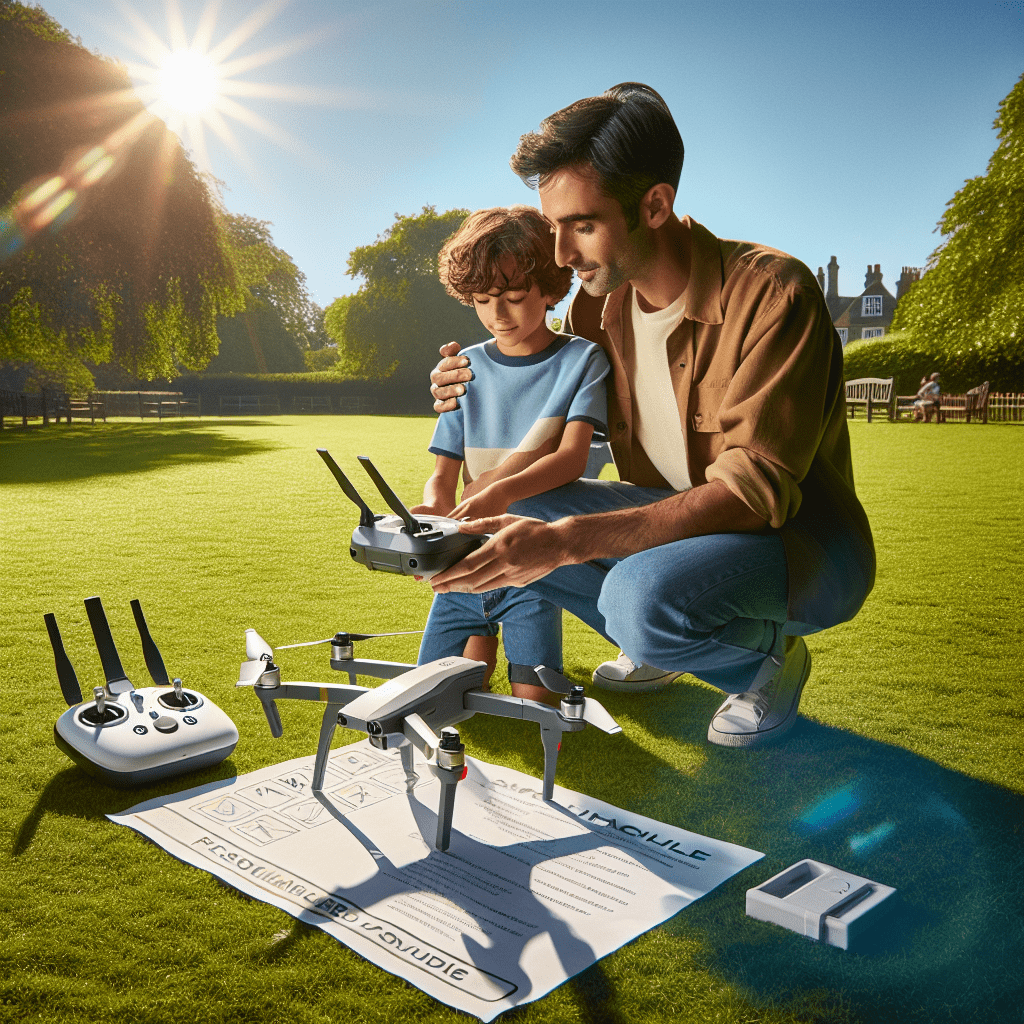Aero 1 Lite Checklist for UK Drone Beginners
In This Article
- Always begin with a full visual inspection of battery, props, and structural frame.
- Calibrate your compass and confirm GPS lock before launch.
- Keep drones under 120m and within visual line of sight.
- Use official apps for updated UK no-fly zone maps.
- Leverage printable or digital versions of your preflight checklist.
- Include children in the safety routine under supervision.
- Perform a soft hover test before every full flight session.
Why You Need a Safety Checklist Before Flying
Understanding Drone Risks and UK Laws
Using a safety checklist is not just about protecting your equipment—it’s about ensuring a responsible approach to airspace usage. The aero 1 lite checklist is designed specifically to meet the UK’s aviation safety protocols, helping you remain compliant while preventing accidents caused by oversight or inexperience.
In the United Kingdom, drones under 250g are generally exempt from registration with the Civil Aviation Authority (CAA), but they are still subject to certain legal constraints. The Aero 1 Lite falls within this lightweight category, yet it’s not immune from the safety responsibilities the law requires. Maintaining visual line of sight, respecting no-fly zones, and ensuring safe operation around people and property are all legal obligations. Failing to comply—knowingly or otherwise—can result in penalties, confiscation, or fines.
This is why the aero 1 lite checklist becomes crucial for first-time flyers. It offers a structured, repeatable process to follow before each takeoff, thus significantly reducing the likelihood of mishaps. By incorporating risk assessment and equipment integrity checks, it also enhances the learning experience for new users who are still familiarising themselves with drone operation.

What Makes the Aero 1 Lite Perfect for Beginners?
Lightweight build, easy controls, and safety features
The Aero 1 Lite has quickly become a favourite among novice drone pilots and younger operators thanks to its beginner-friendly design and robust safety features. With a take-off weight under 250 grams, it’s exempt from many UK drone regulations, yet still offers an excellent platform for learning the essentials of aerial control, navigation, and photographic capture.
Equipped with altitude hold, one-touch take-off and landing, and built-in GPS-assisted stabilisation, the Aero 1 Lite makes it easy for first-time users to gain confidence in the air. It also features propeller guards, reducing the likelihood of damage during minor collisions. All these elements make it the ideal drone for learning both the technical and legal aspects of responsible flight.
“The Aero 1 Lite is a brilliantly accessible tool for first-time drone pilots learning the ropes under UK air law.”
Your Preflight Checklist Essentials
Before powering on your Aero 1 Lite, a comprehensive preflight checklist ensures that every aspect of the drone and your environment is ready for safe operation. This systematic approach is fundamental, especially if you’re exploring new locations or have recently completed firmware updates on the drone or its app. Your preflight routine should always incorporate visual inspections, functional tests, firmware status checks, and airspace reviews.
The primary reason for adopting an aero 1 lite checklist is to remove uncertainty. Flying a drone is not difficult, but the ease of operation can breed complacency. This is where structure makes a difference. A dependable checklist severely limits the opportunity for errors—some of which can damage hardware or, worse, endanger others.
Battery, Propeller & Frame Checks
The very first elements to check on your Aero 1 Lite are the physical components. Begin by inspecting the battery for any swelling or leakages—these symptoms suggest the battery is no longer safe to use. Check also whether the battery terminals are clean and making solid contact. A loose connection could cause signal loss mid-flight.
Next, examine all propellers for cracks, warping, or accumulated dirt. Damaged blades disrupt flight stability and may fail entirely under pressure. If in doubt, replace them. Finally, inspect the frame for bends or stress fractures, particularly around the motor mounts and landing struts. A stiff impact from a previous crash might have weakened the frame, so this part of the aero 1 lite checklist is vital for safety assurance.
Signal, GPS, and Compass Calibration
Every flight should begin with a clear broadcast signal between the controller and the drone. A simple way to confirm this is by observing status indicators on the controller screen or mobile app. Signal interference can come from nearby towers, Wi-Fi networks, or even geographic features such as large metal structures.
Next, ensure GPS lock is achieved before takeoff. Your Aero 1 Lite should indicate when it’s attained a confident GPS fix sufficient for safe flying. Without this, you may lose positioning features like ‘Return to Home’ (RTH), making it more difficult to retrieve the drone manually. While GPS helps with orientation, compass calibration ensures that GPS coordinates are interpreted correctly. Always perform calibration if flying in a new or unfamiliar location.
Ensure Visual Line of Sight and Legal Altitude Limits
Maintaining a clear line of sight with your drone is both a legal and practical necessity. Not only is it required under the UK drone code, but it also helps you avoid sudden environmental changes and navigate the drone safely if the video feed fails. Choose flying areas with minimal tall obstructions that may block your view or interfere with signal transmission.
UK law restricts drone flying to a maximum altitude of 120 metres. Going higher poses a risk to manned aviation, particularly helicopters and small planes. Most drone apps allow users to input altitude restrictions manually. Be sure to configure these settings before departure to ensure compliance and prevent accidental violations during flight.
Understanding No-Fly Zones and UK Airspace Rules
Before taking flight, familiarise yourself with any temporary restrictions, as well as permanent no-fly zones. The Civil Aviation Authority’s Drone Assist app can provide real-time advisories and geofenced areas, often updated weekly. Locations near airports, prisons, and certain industrial facilities are automatically restricted.
One of the main items on the aero 1 lite checklist should be an airspace check. Even if you’ve flown at a location previously, conditions can change due to events like public demonstrations or new flight corridor directives. This is where maintaining good habits ensures a sustainable and safe flying culture for all drone operators.
For more details about drone safety and legal compliance in the UK, refer to these resources: Learn more about Drone Safety & Compliance for Beginners, Comprehensive aviation safety checklist examples.
How Children Can Learn Drone Safety with the Aero 1 Lite
The Aero 1 Lite offers an exciting opportunity to teach children the basics of flight safety and responsible device usage. Designed with protective features like altitude lock, emergency stop functions and propeller guards, it allows younger users to focus on learning rather than damage control.
However, adult supervision is still essential. Implementing the aero 1 lite checklist as a shared routine can reinforce best practices and make learning collaborative. As children become familiar with observing their environment, following instructions, and interpreting drone feedback symbols, they develop good aviation habits that will benefit them for years.
Common Mistakes First-Time Flyers Make
Many first-time drone operators neglect to follow a preflight routine, treating drones like simple remote-controlled toys. This mistake can lead to flyaways, unscheduled landings, or mid-air stalling. At the core of these issues is a lack of preparation—usually avoidable with a structured aero 1 lite checklist.
Another frequent error is flying in areas without checking for electromagnetic interference or completing the GPS lock sequence. If the drone takes off without full calibration, it may not respond correctly to directional commands. Rushing through preflight checks or ignoring wind conditions also puts your drone at risk.
You can read more about best beginner drone practices here: Read a related article
Printable vs. Interactive Checklist Formats
Depending on your preference, the aero 1 lite checklist is available in both printable and digital formats. The printable version provides a tactile process ideal for younger pilots or those flying in areas without good internet access. It can be easily laminated for durability and re-used with a dry-erase pen.
Interactive digital checklists, on the other hand, often integrate with flight control apps. These solutions can record check-off times, sync across devices, and raise alerts when items are missed. While tech-forward, they may be overwhelming for brand-new users, which is why many start with paper and evolve into digital tracking once their process becomes second nature.
Final Hover Test Before Takeoff
The last step in the aero 1 lite checklist is the soft hover test. Launch your drone to eye level and hover for 20–30 seconds. Watch for abnormal movements, vibrations, or delayed input responses. Confirm GPS lock status, signal strength, and battery levels right before manual flight begins.
This test is often overlooked but is instrumental for identifying hidden problems, such as a failing ESC (Electronic Speed Controller) or unexplained drift. A well-executed hover confirms readiness and gives pilots the confidence to proceed safely.
Checklist Recap and Flying with Confidence
The aero 1 lite checklist is more than a series of steps—it is the foundation for a disciplined, safe, and enjoyable flight. By committing to safety checks, signal tests, calibration routines, and environmental assessments, every flight becomes a controlled and rewarding experience.
With time, the checklist will feel second nature and flying will become more intuitive. But don’t let comfort become complacency. Conditions change, firmware evolves, and the importance of structured preparation never diminishes. Whether you’re a young learner, a parent, or a curious recreational pilot, discipline on the ground creates success in the air.
Great guide on aero-1-lite-safety-checklist-first-time-uk – Community Feedback
What checks should I perform before my first Aero 1 Lite flight?
You should inspect the drone’s frame and propellers, check battery charge, confirm remote control functionality, ensure GPS is locked, review local flight laws, and conduct a short hover test in a safe area before your first Aero 1 Lite flight.
Do I need CAA approval to fly an Aero 1 Lite in the UK?
No, the Aero 1 Lite is typically under 250g, so it doesn’t require CAA registration for personal/recreational use, but you must still fly responsibly and adhere to current UK drone laws and safety guidelines.
What are the legal altitude and distance limits in the UK for beginner drones?
For recreational drones like the Aero 1 Lite, the UK maximum height is 120 metres (400ft) above ground and you must keep the drone within visual line of sight, at least 50 metres away from people and property unless in a designated area.

